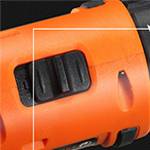Innovative Extruder Technology for Producing Floating Fish Feed Efficiently and Effectively
Dec . 04, 2024 15:59 Back to list
Innovative Extruder Technology for Producing Floating Fish Feed Efficiently and Effectively
Understanding Floating Fish Feed Extruders A Key to Sustainable Aquaculture
In recent years, the aquaculture industry has witnessed remarkable growth, driven by the increasing global demand for fish and seafood. As the industry expands, so does the need for efficient and high-quality fish feed. One of the most innovative solutions that have emerged is the floating fish feed extruder, a vital machine that revolutionizes the production of fish feed. This article explores the functionality, benefits, and importance of floating fish feed extruders in sustainable aquaculture practices.
What is a Floating Fish Feed Extruder?
A floating fish feed extruder is a specialized piece of equipment used to produce high-quality fish feed pellets that float on the surface of water. The process begins with raw materials—grains, fish meal, vegetable proteins, and vitamins—being fed into the extruder. Here, they undergo a series of processes, including grinding, mixing, heating, and finally, extruding through a die to form pellets. The result is a nutritious feed that maintains buoyancy, making it an ideal choice for fish farming.
Key Features and Functions
1. High Temperature and Pressure Processing The extruder operates at high temperatures and pressures, which help to kill harmful pathogens and improve the digestibility of feed ingredients. This feature enhances the nutritional value of the pellets and ensures the health of the fish.
2. Controlled Expansion During the extrusion process, moisture evaporates, leading to the expansion of the feed. This expansion creates a porous structure that allows the pellets to float, providing easy access for fish at the surface.
3. Customizable Formulations Floating fish feed extruders can accommodate various formulations and textures, allowing producers to tailor the feed to the specific nutritional needs of different fish species. This flexibility is crucial for optimizing growth rates and health in farmed fish populations.
floating fish feed extruder

4. Efficient Production Modern extruders are designed for high throughput, which enables fish feed manufacturers to produce significant quantities of feed in a relatively short time frame. This efficiency is essential in meeting the growing demand for fish and ensuring competitive pricing.
Benefits of Using Floating Fish Feed Extruders
1. Improved Feed Conversion Rates Fish that are fed high-quality floating feeds tend to exhibit better feed conversion ratios, meaning that they gain more weight relative to the amount of feed consumed. This efficiency helps lower production costs and maximizes profitability for aquaculture operations.
2. Minimized Feed Waste Since floating pellets remain on the surface, fish find it easier to consume them without wasting feed that sinks to the bottom. This not only ensures better utilization of feed but also lessens water pollution from unused feed materials.
3. Enhanced Fish Health By allowing farmers to customize formulations, extruders enable the inclusion of probiotics, prebiotics, and other additives that promote fish health and reduce the risk of disease outbreaks. Healthy fish contribute to sustainable aquaculture practices.
4. Environmental Sustainability Floating fish feed production using extruders incorporates eco-friendly practices by utilizing sustainable ingredients. Moreover, the efficient feeding practices reduce overfeeding and waste, which can contribute to healthier aquatic ecosystems.
Conclusion
Floating fish feed extruders play a pivotal role in the aquaculture industry by producing high-quality, nutritionally balanced, and environmentally sustainable fish feed. As global demand for seafood rises, the importance of efficient feed production becomes increasingly clear. The incorporation of these advanced machines not only enhances fish growth and health but also supports the industry's overall sustainability. By investing in floating fish feed extruders, aquaculture businesses can contribute to meeting the world's fish supply needs while prioritizing environmental responsible practices. This technology stands as a cornerstone in the future of sustainable aquaculture.
-
Hot Sale 24 & 18 Door Rabbit Cages - Premium Breeding Solutions
NewsJul.25,2025
-
Automatic Feeding Line System Pan Feeder Nipple Drinker - Anping County Yize Metal Products Co., Ltd.
NewsJul.21,2025
-
Automatic Feeding Line System Pan Feeder Nipple Drinker - Anping County Yize Metal Products Co., Ltd.
NewsJul.21,2025
-
Automatic Feeding Line System - Anping Yize | Precision & Nipple
NewsJul.21,2025
-
Automatic Feeding Line System - Anping Yize | Precision & Nipple
NewsJul.21,2025
-
Automatic Feeding Line System-Anping County Yize Metal Products Co., Ltd.|Efficient Feed Distribution&Customized Animal Farming Solutions
NewsJul.21,2025






